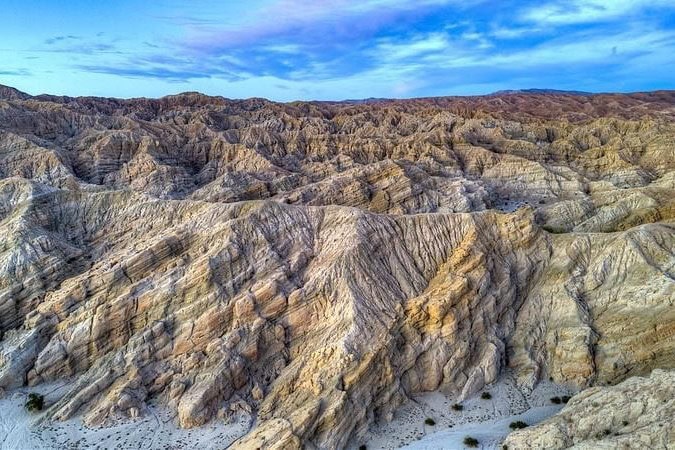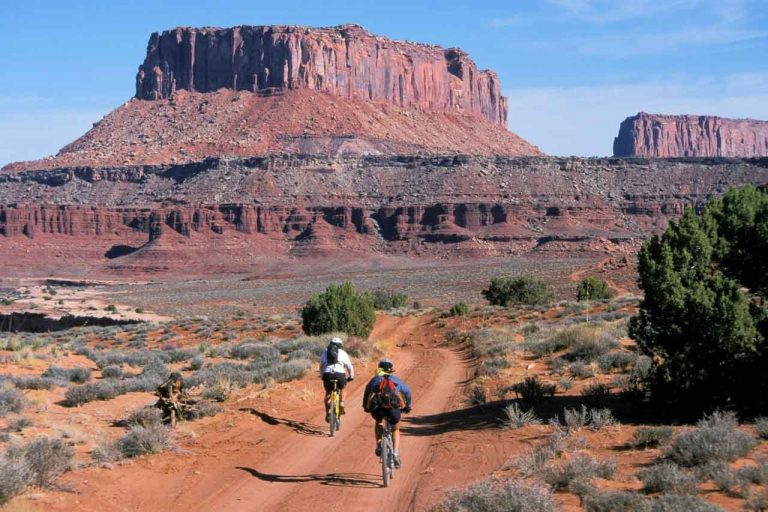7 Top Things to Do in Shark Valley (Everglades National Park)
“Shark Valley is the heartland of the Everglades,” the National Park Service says. Is there a better reason to visit this part of Everglades National Park? I didn’t think so either!
A popular day trip destination from Miami, Shark Valley provides the perfect introduction to the glorious wetland world of the famed Everglades.
It’s a fantastic place to see iconic wildlife, from abundant alligators and turtles to ubiquitous birds, and immerse yourself—figuratively speaking, of course—in this extraordinary ecosystem.
What sets Shark Valley apart from other areas in Everglades National Park, though, is the possibility to explore it by tram. Alternatively, this is also where you can enjoy one of the best bike rides in the National Park System.
This is all to say that visiting Shark Valley is absolutely worth it. In fact, a visit to Everglades National Park isn’t complete without a bike ride or tram tour in Shark Valley.
Below, you’ll find a wealth of Shark Valley information, including answers to common questions, as well as an overview of the top things to do in Shark Valley.
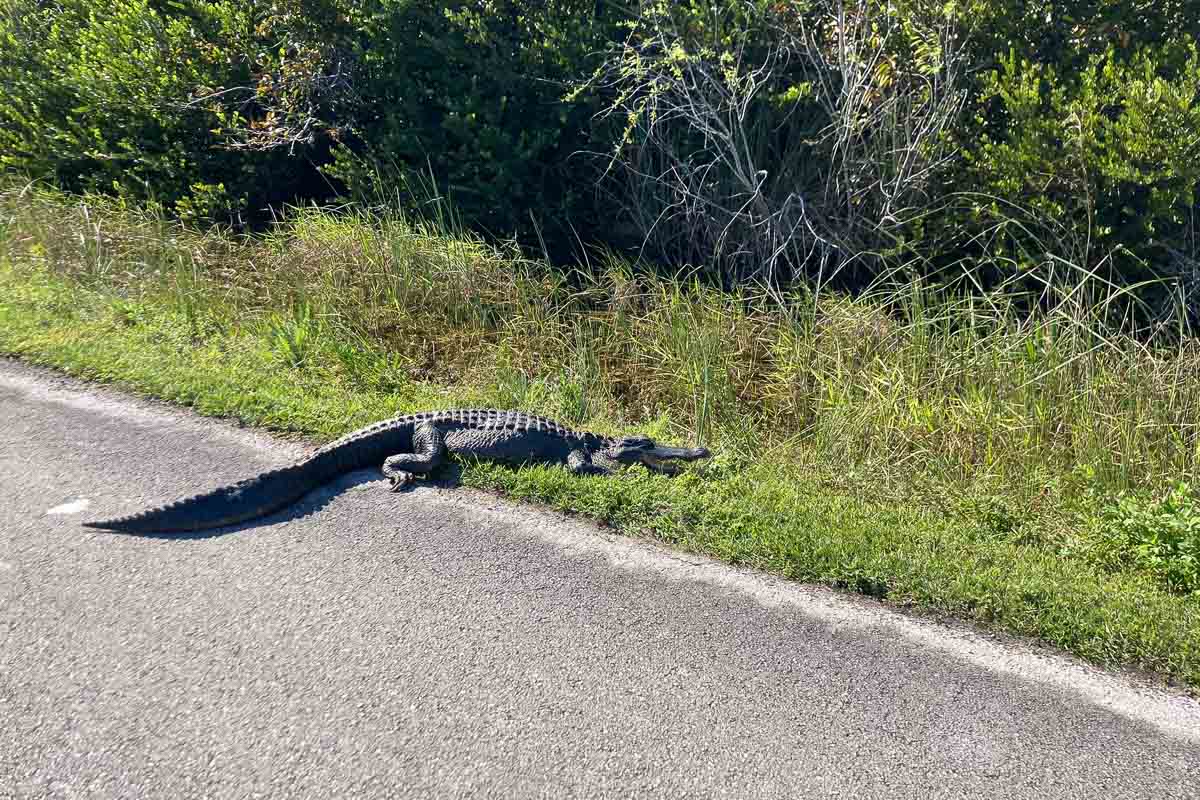
This blog post about what to do in Shark Valley in Everglades National Park contains affiliate links. You can read more about our Terms of Use / Disclosure here.
Visiting Shark Valley in the Everglades FAQs
Where Is Shark Valley Located?
Shark Valley is smack-bang in the middle of the tip of south Florida.
Located in the heart of the “True Everglades,” it encompasses the northern portion of Everglades National Park and is just east of Big Cypress National Preserve. It’s along Highway 41, also known as the Tamiami Trail, directly west from Miami.
Here are some driving distances (and estimated times) from other popular places in south Florida, including Miami Beach, Fort Lauderdale, Biscayne National Park, and Flamingo:
- Miami International Airport (MIA) to Shark Valley: 35 miles (45 minutes)
- Miami to Shark Valley: 41 miles (1 hour)
- Miami Beach to Shark Valley: 43 miles (1 hour)
- Homestead to Shark Valley: 38 miles (1 hour)
- Florida City to Shark Valley: 40 miles (1 hour)
- Biscayne National Park to Shark Valley: 52 miles (1 hour 15 minutes)
- Fort Lauderdale to Shark Valley: 62 miles (1 hour 15 minutes)
- Fort Lauderdale-Hollywood International Airport (FLL) to Shark Valley: 62 miles (1 hour 15 minutes)
- Key Largo to Shark Valley: 63 miles (1 hour 30 minutes)
- Flamingo (Everglades National Park) to Shark Valley: 87 miles (2 hours)
- Everglades City to Shark Valley: 45 miles (50 minutes)
- Naples to Shark Valley: 73 miles (1 hour 30 minutes)
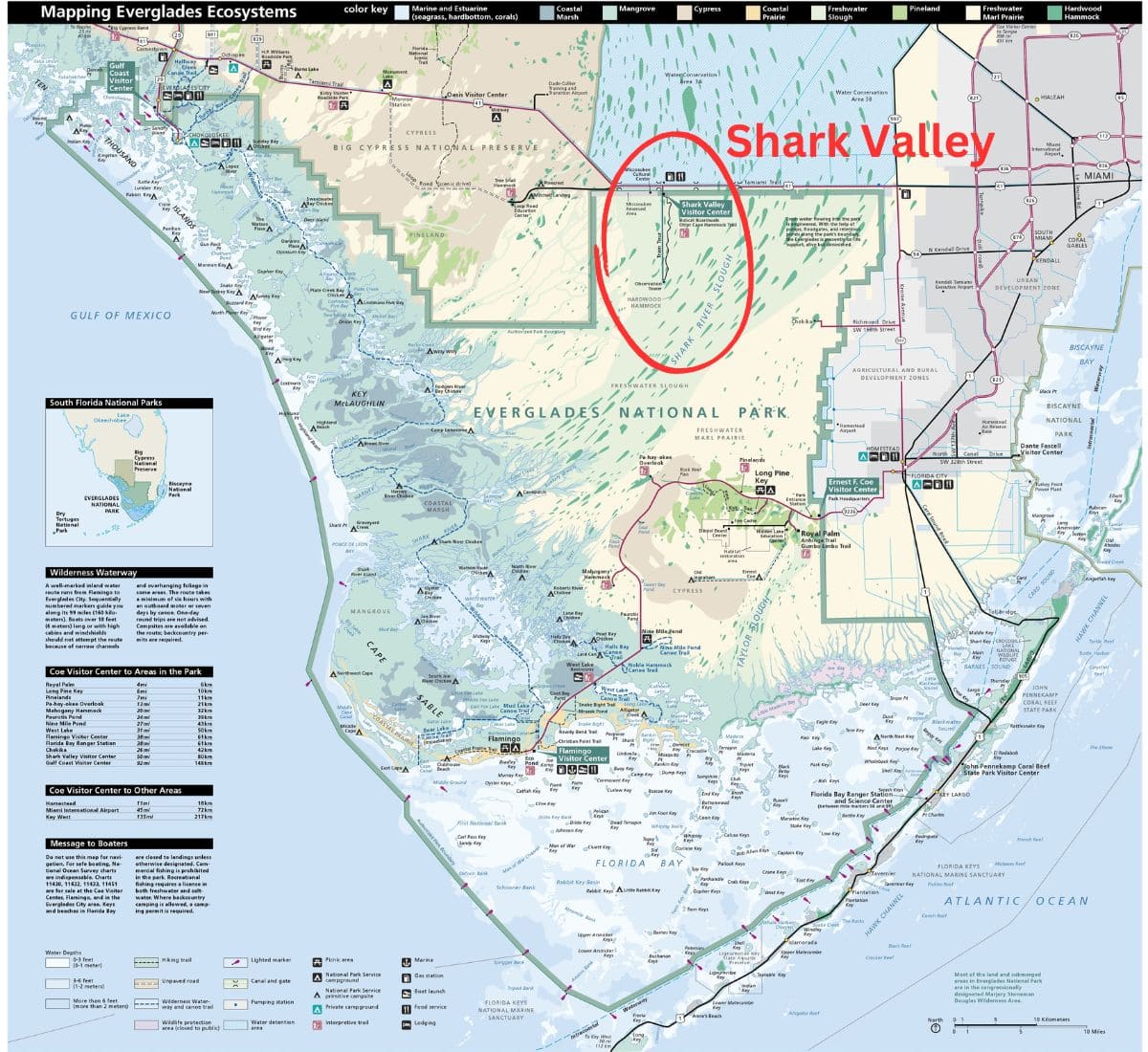
How Many Days Do I Need to Explore Shark Valley?
You can easily see all Shark Valley has to offer in just one day.
In fact, completing the 15-mile Shark Valley Tram Road, whether you’re biking or taking a tram tour, doesn’t take much longer than a few hours. Most people spend 2-4 hours in Shark Valley—the perfect day trip.
What Is the Best Time to Visit Shark Valley and the Everglades?
Although you can explore Shark Valley any time during the year, the objectively best time to visit Shark Valley is winter.
December through February is the busy season in Everglades National Park. For good reason, since this is the season with the most enjoyable temperatures, plentiful sunshine, less mosquitoes, and lower humidity.
Winter is also the dry season in the Everglades, which means that water levels are at their lowest. This, in turn, means that wildlife tends to congregate around a number of freshwater locations, such as certain ponds and canals.
So, in addition to very enjoyable weather, winter is also the prime wildlife viewing season in Shark Valley and Everglades National Park as a whole.
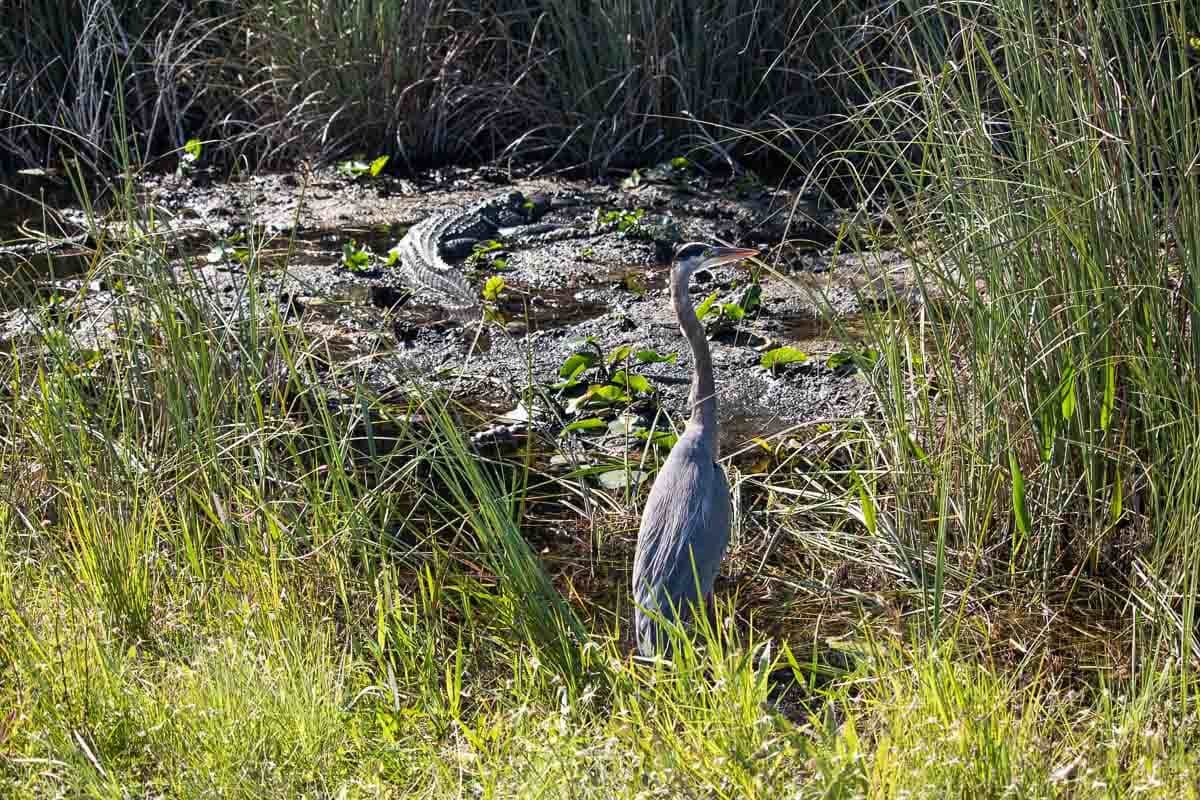
Are There Sharks in Shark Valley Everglades?
The wetlands in Shark Valley are freshwater, dozens of miles away from the nearest body of saltwater. So no, despite its name, there are no sharks in Shark Valley.
Where Does the Name Shark Valley Come From?
If there are no sharks, why is it called Shark Valley? you might wonder. The explanation is pretty simple.
Shark Valley is named because it‘s in the Shark River Slough, with its water flowing ever so slowly toward the Shark River in the southwest part of Everglades National Park.
What Gear Do I Need to Visit Shark Valley?
Shark Valley is in the Everglades, the largest subtropical wilderness in the United States. You should, therefore, expect warm and humid weather—even during the dry winter season, it can be quite humid and hot outside.
Essential things to bring with you when visiting and enjoying some activities in Flamingo are the following:
- Sunglasses
- Sunscreen
- Hat
- Binoculars
- Camera
- Walking shoes
- Insect repellent
- A cooler with food, snacks, and plenty of water
- National Park Pass, if you have one (you can buy America the Beautiful Passes here)
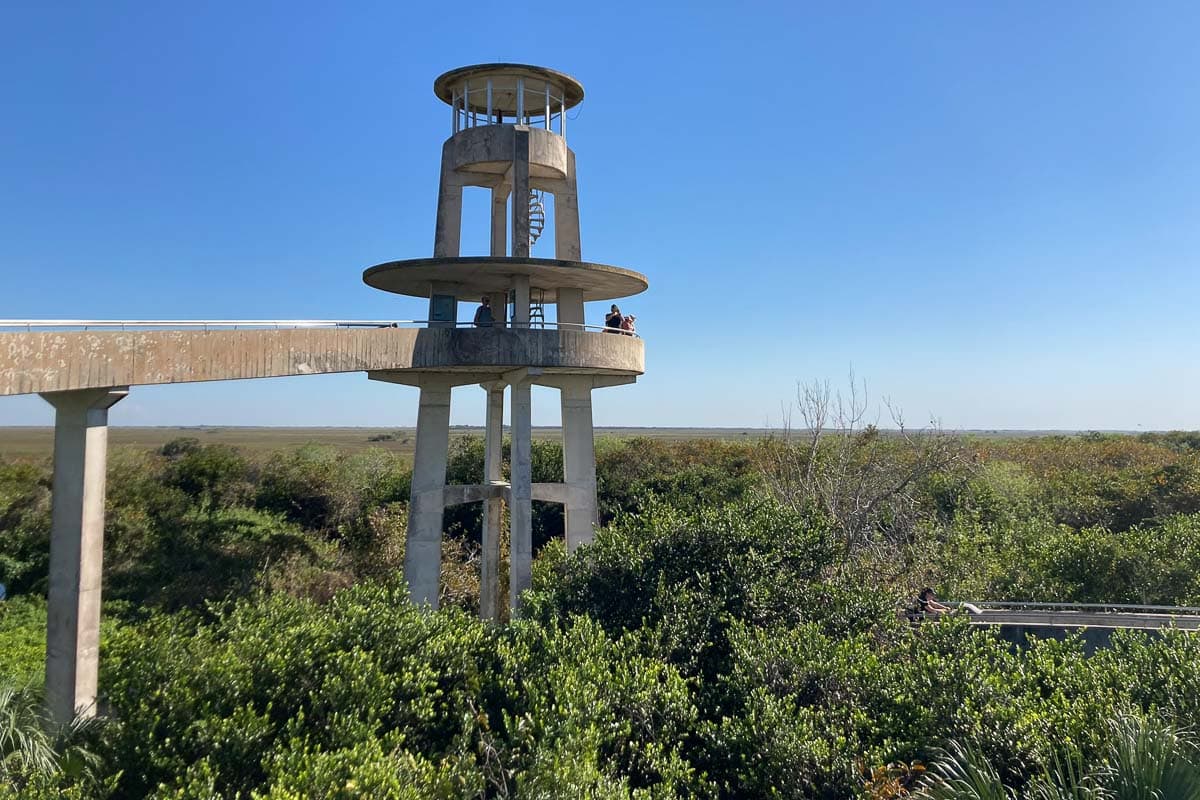
Which Visitor Services Are Available in Shark Valley?
There are no campgrounds or hotels in Shark Valley, but there are plenty of amenities and services to accommodate day visitors. This includes a visitor center, gift shop, bike rentals, and restrooms.
Although drinks and limited snack foods are available, I strongly recommend bringing plenty of water and lunch/snacks yourself.
These are the facilities you’ll find in Shark Valley:
- Shark Valley Visitor Center – recommended place to start your visit to Shark Valley, providing educational displays and exhibits, brochures, maps, a park film, restrooms, and a gift shop.
- Shark Valley Tram Tours & Bike Rentals – guided tram tours, bicycle rentals, soft drinks and snacks.
7 Top Things to Do in Shark Valley (Everglades National Park)
The most easily reachable part of Everglades National Park, Shark Valley is the place where most people go when they visit the Everglades. Let’s now take a closer at all the options for things to do in Shark Valley!
Visit the Shark Valley Visitor Center
I recommend starting your time in Shark Valley with a visit to the Shark Valley Visitor Center. This is a great place to gather information, learn about the area, and watch the park film.
Additionally, the gift shop managed by the Florida National Parks Association sells things like postcards, books, and souvenirs.
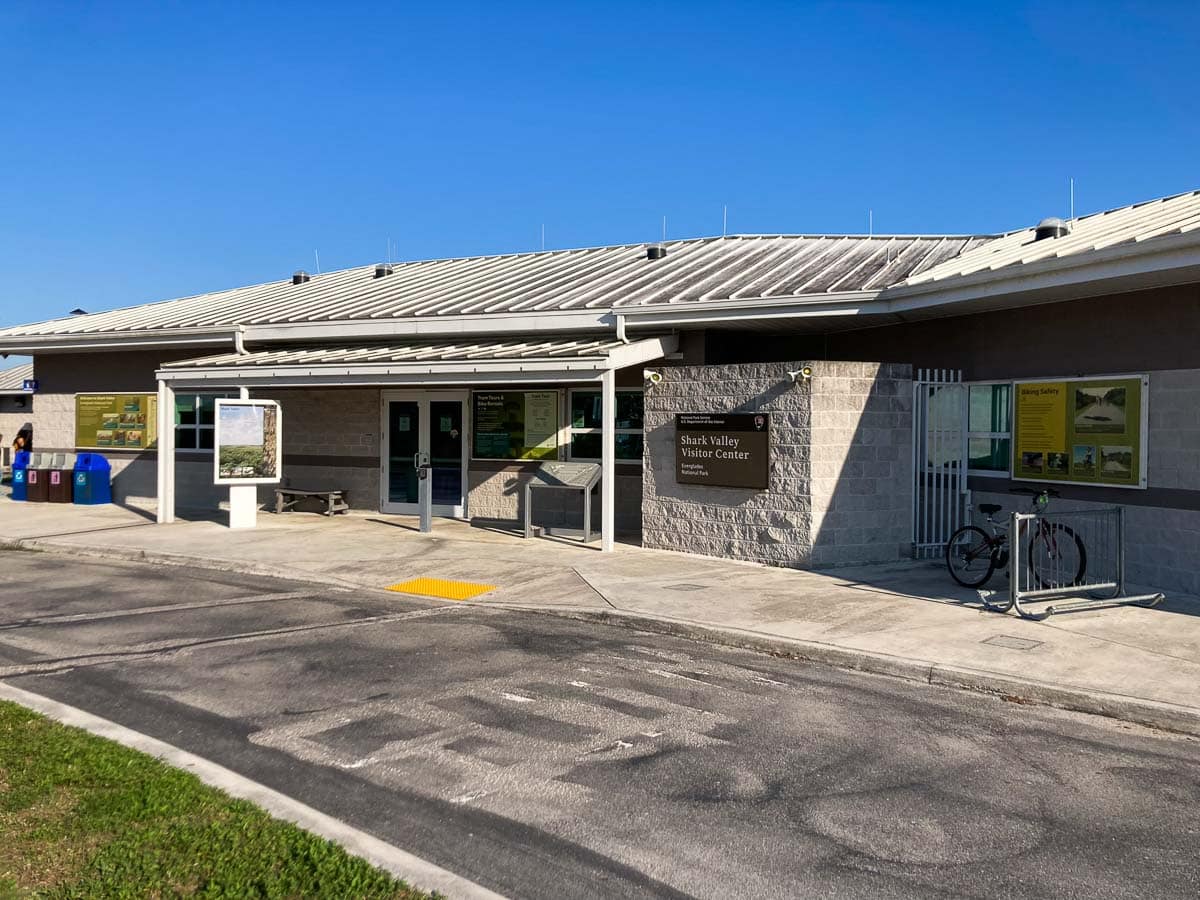
Join a Guided Shark Valley Tram Tour
Shark Valley tram tours are one of the most popular things to do in Shark Valley—and probably what the area is most famous for.
These guided tours start at the visitor center and loop through the area on the 15-mile Shark Valley Tram Road. During this wonderful ecotour, a naturalist will offer insights into this unique ecosystem, while also pointing out wildlife along the way.
Shark Valley tram tours are about 2 hours long and include a stop at the famous Shark Valley Observation Tower (see below).
You can book your Shark Valley tram tour here.
Go on a Self-Guided Shark Valley Bike Trip
An excellent alternative to the guided tram tours is a self-guided bike ride on the paved 15-mile Shark Valley Tram Road. The concessioner that organizes the tram tours also provides Shark Valley bike rentals.
As memorable as a tram tour in Shark Valley is, I’d personally recommend renting bikes. This is a great way to explore Shark Valley at your own pace, enjoy some sunshine, and get some exercise.
You can stop wherever and as often as you want, allowing you to better observe the wildlife you’ll undoubtedly see along the way.
After picking up your Shark Valley bike rental (you can, of course, also bring your own bikes), you’ll follow the straight West Road all the way to the Shark Valley Observation Tower, the halfway point of this easy yet unforgettable Everglades cycling adventure.
The return ride meanders past ponds and through sawgrass marshes, with some patches of trees in between.
A typical Shark Valley bike ride, easily one of the greatest bike trips in the national parks, takes between 2 and 4 hours, depending on your speed and the number of stops you take on the way.
You can reserve Shark Valley bikes here.
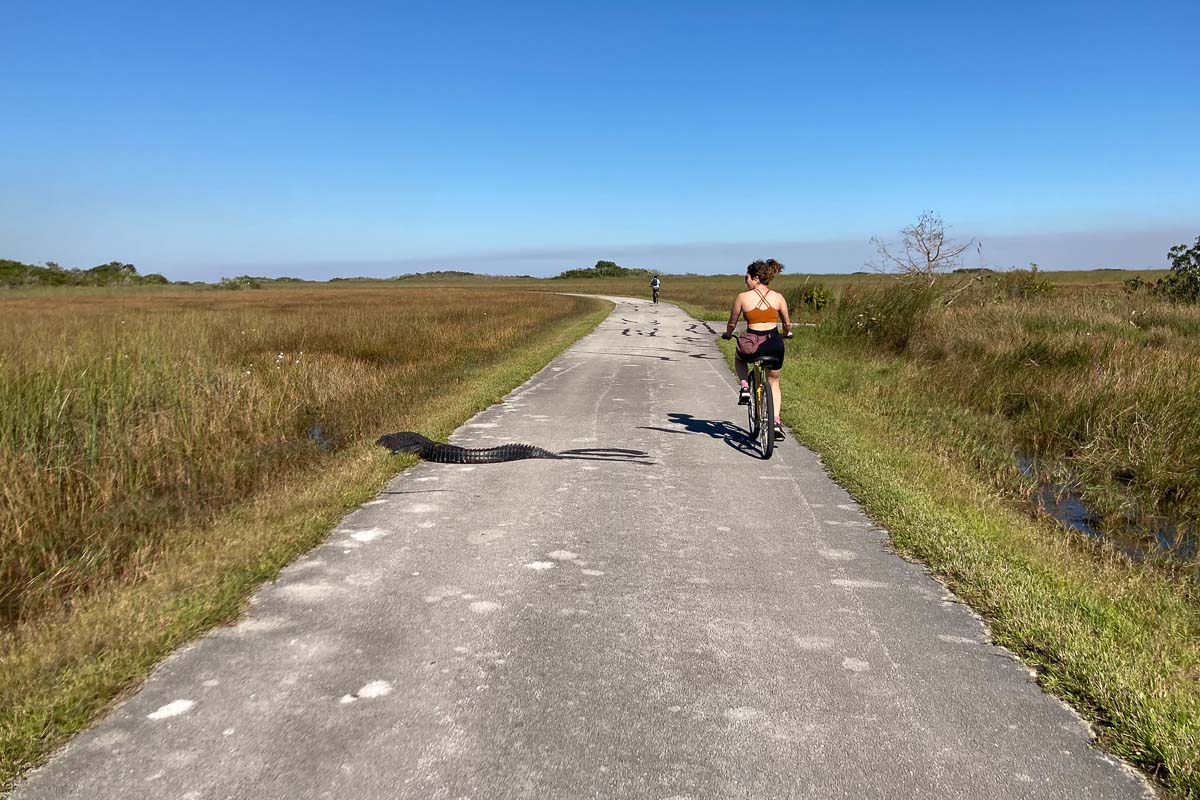
Climb the Shark Valley Observation Tower
The wheelchair-accessible Shark Valley Observation Tower is the halfway point on tram tours and bike rides alike, a commanding structure in the heart of sprawling sawgrass marshes.
This is the highest point accessible on foot in Everglades National Park. (You can’t bike up the tower, but there are bike racks available.) Restrooms and a water fountain are located at the 7-mile marker, right next to the tower.
Needless to say, the 360-degree views from the top are spectacular, taking in the freshwater Shark River Slough and the iconic “River of Grass.”
What I do have to say, though, is that you should also look directly down from the top. There may be one or more alligators lounging right underneath the tower.
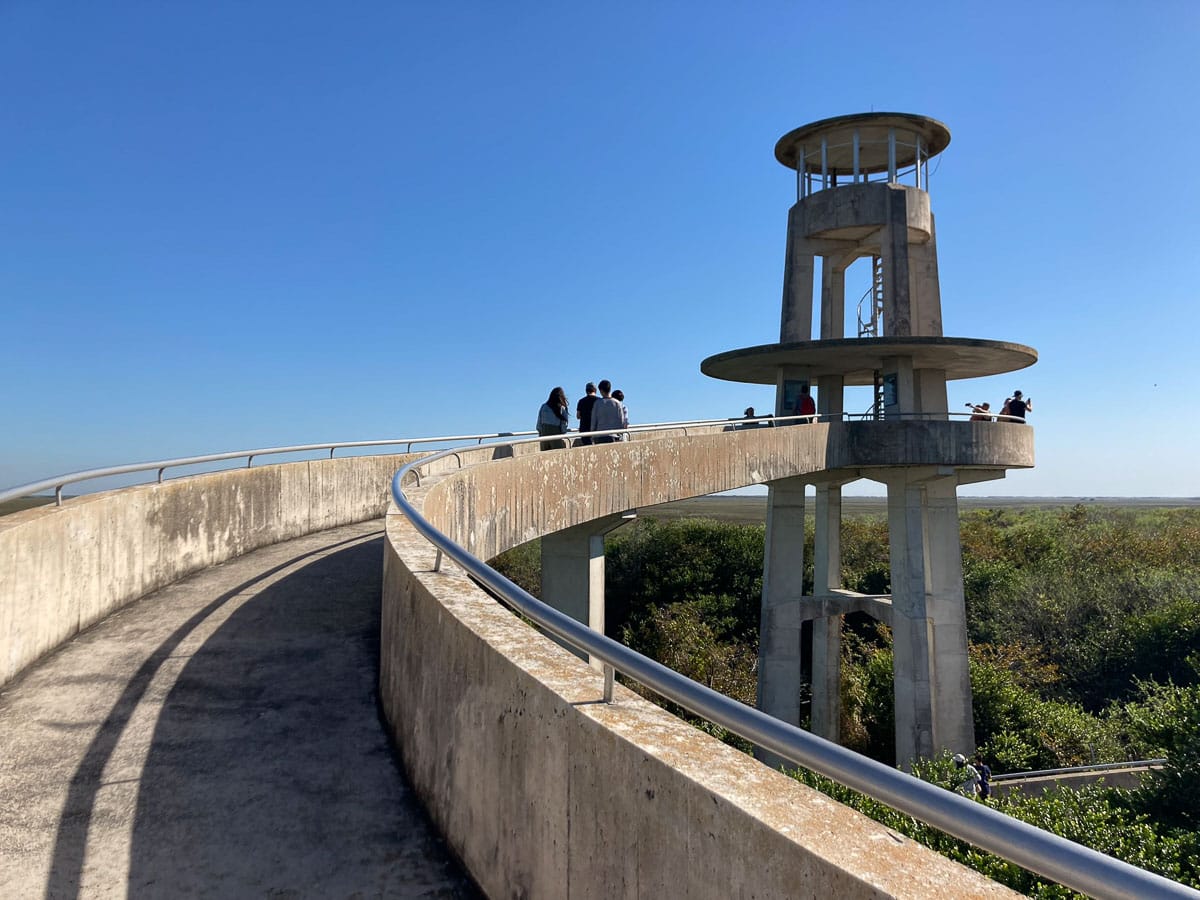
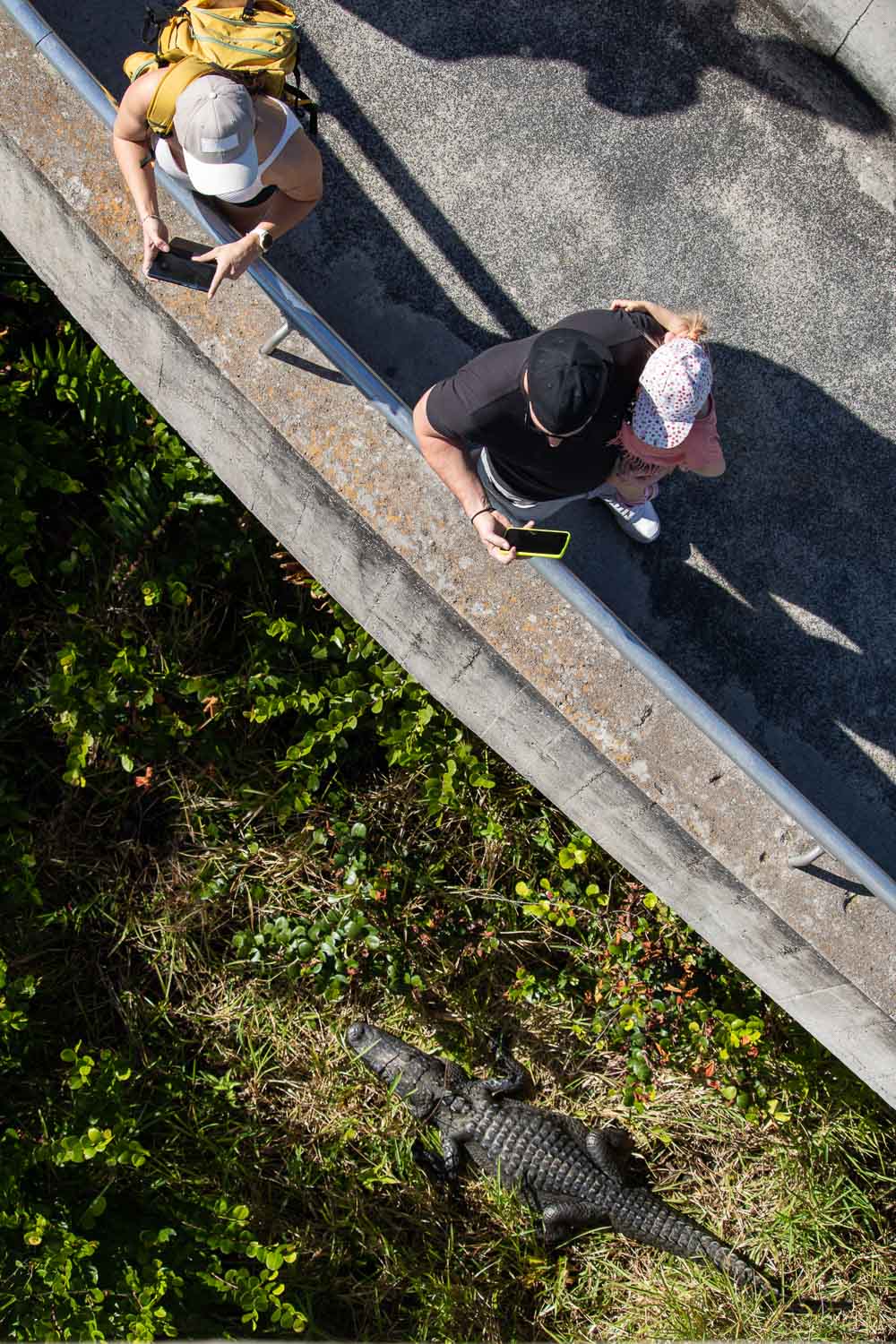
Count Alligators
Shark Valley is one of the best places to see alligators in Everglades National Park. You’re certain to see several of them along the Shark Valley Tram Road.
On my own bike ride in Shark Valley, I saw 91 alligators (!)—literally, I did actually count them.
Note: While alligators may seem exceptionally docile, relaxed, and calm, they can move very rapidly and unexpectedly. The National Park Service advises visitors to stay at least 15 to 20 feet from all alligators and to stay away from or be extremely cautious at waterlines.
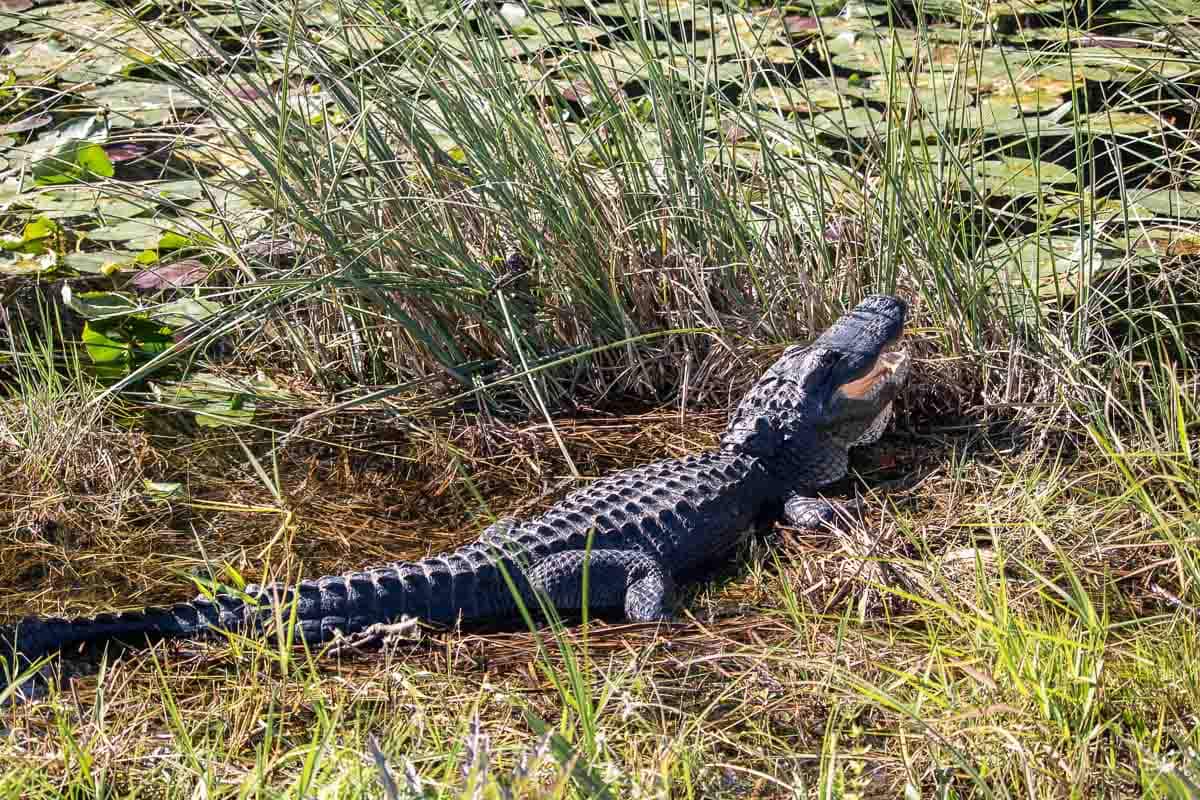
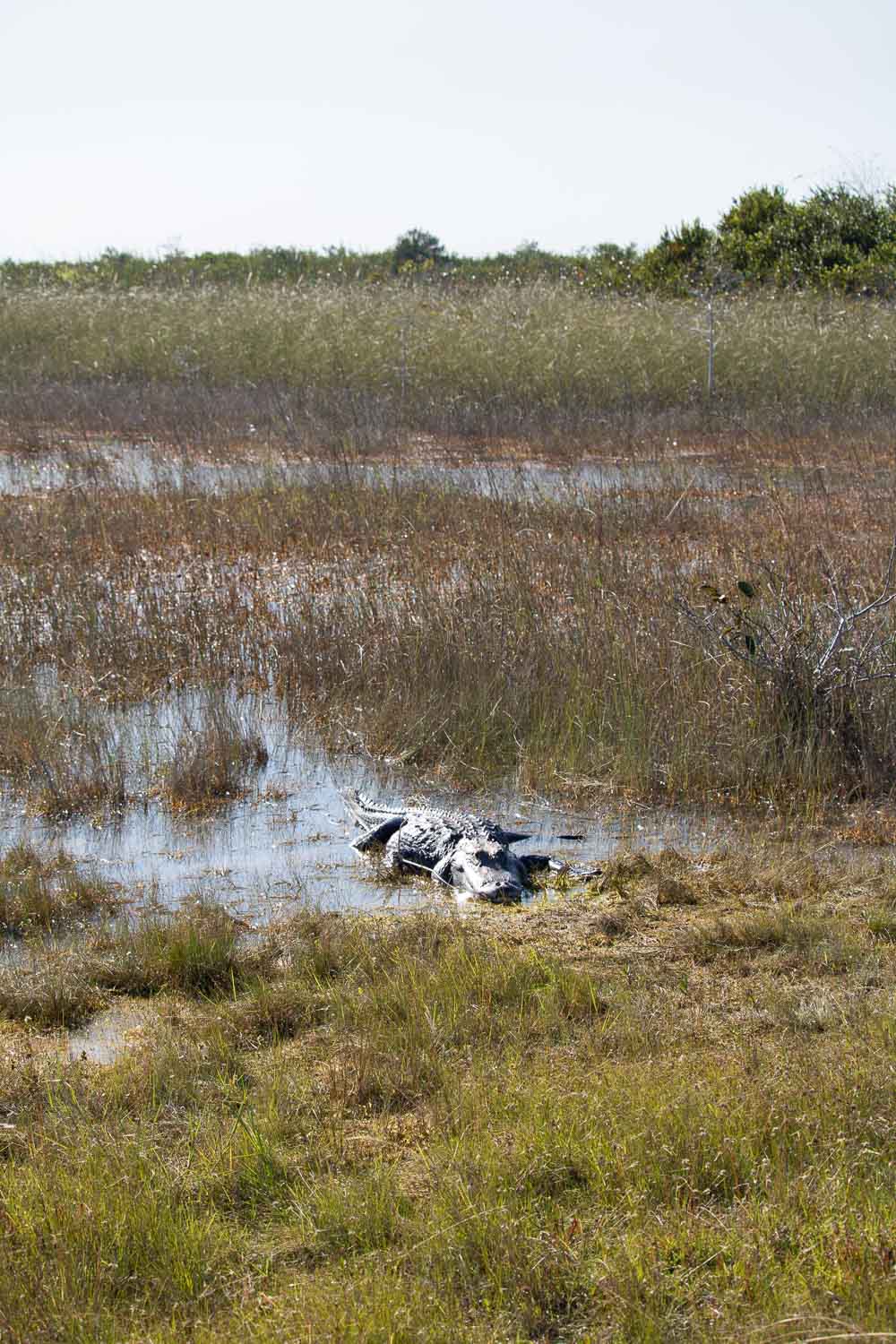
Enjoy World-Class Bird Watching
Along with huge numbers of alligators, Shark Valley also offers exceptional bird watching opportunities. After all, a main reason why Everglades National Park was established was to protect the region’s rich bird life.
The wetlands of the Shark River Slough in Shark Valley are home to numerous Everglades bird species.
Watch for anhingas, cormorants, limpkins, snail kites, purple gallinules, and various wading birds, such as great blue herons, snowy egrets, wood storks, and white ibises.
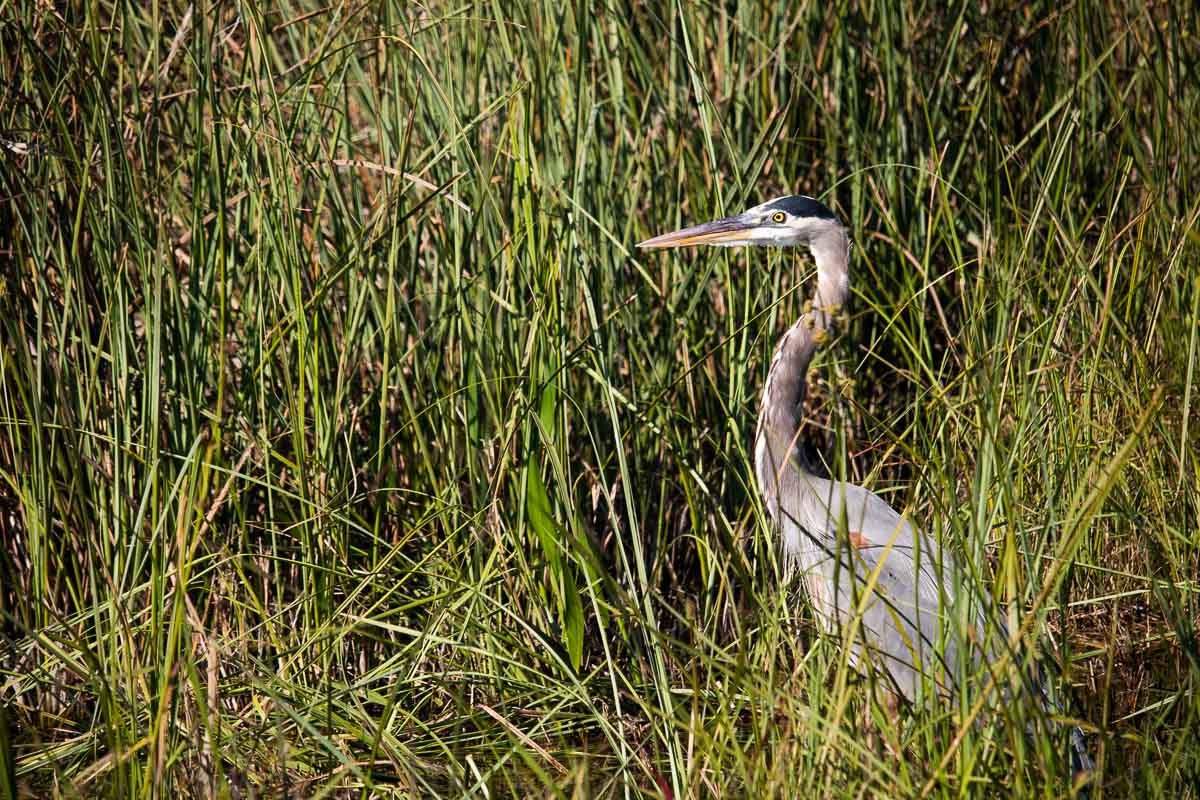
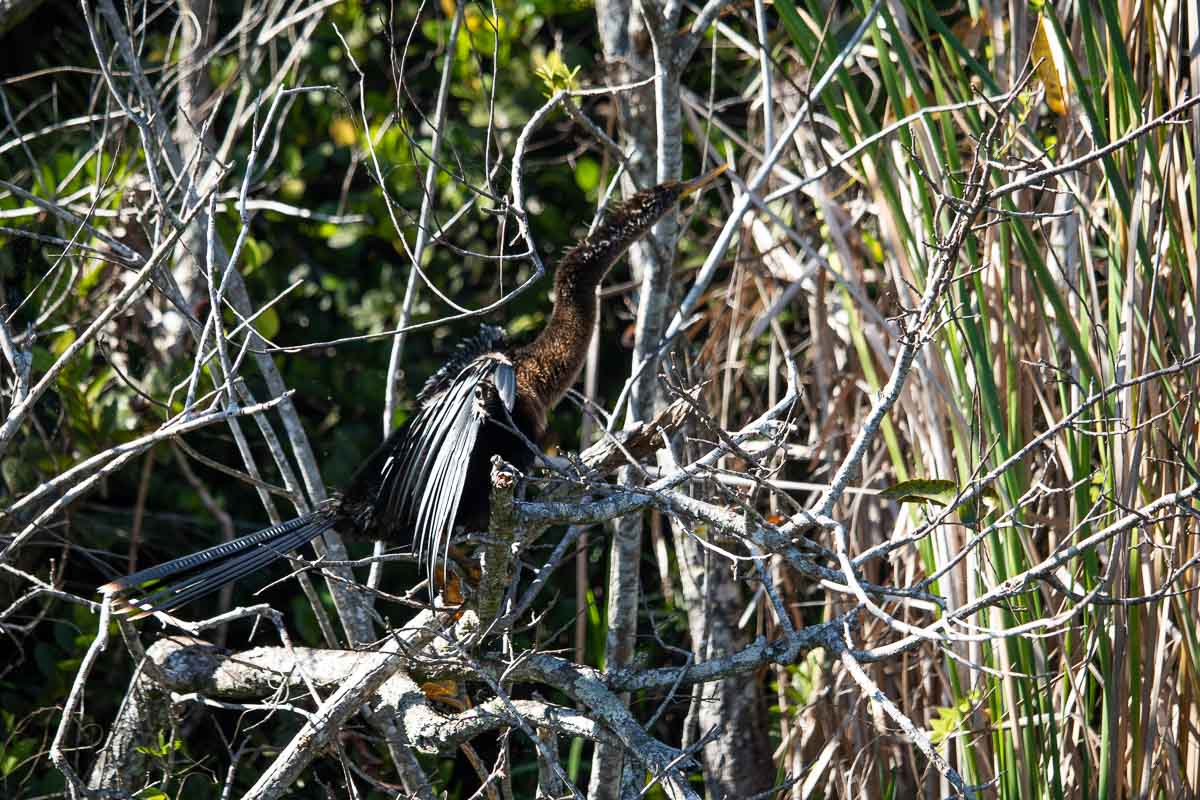
Explore Shark Valley Walking Trails
Shark Valley is best explored on wheels—whether it’s a tram or bicycle—but there are a couple of short walking options, too. Two easy trails are off the Shark Valley Tram Road:
- Bobcat Boardwalk – self-guided, accessible 0.2-mile boardwalk through sawgrass marshes and a tropical hardwood forest, situated behind the Shark Valley Visitor Center
- Otter Cave Hammock Trail – unpaved 0.3-mile trail through a tropical hardwood forest and across a small stream, located about half-a-mile behind the Shark Valley Visitor Center
Additionally, you can also walk (a part of) the 15-mile Shark Valley Tram Road.
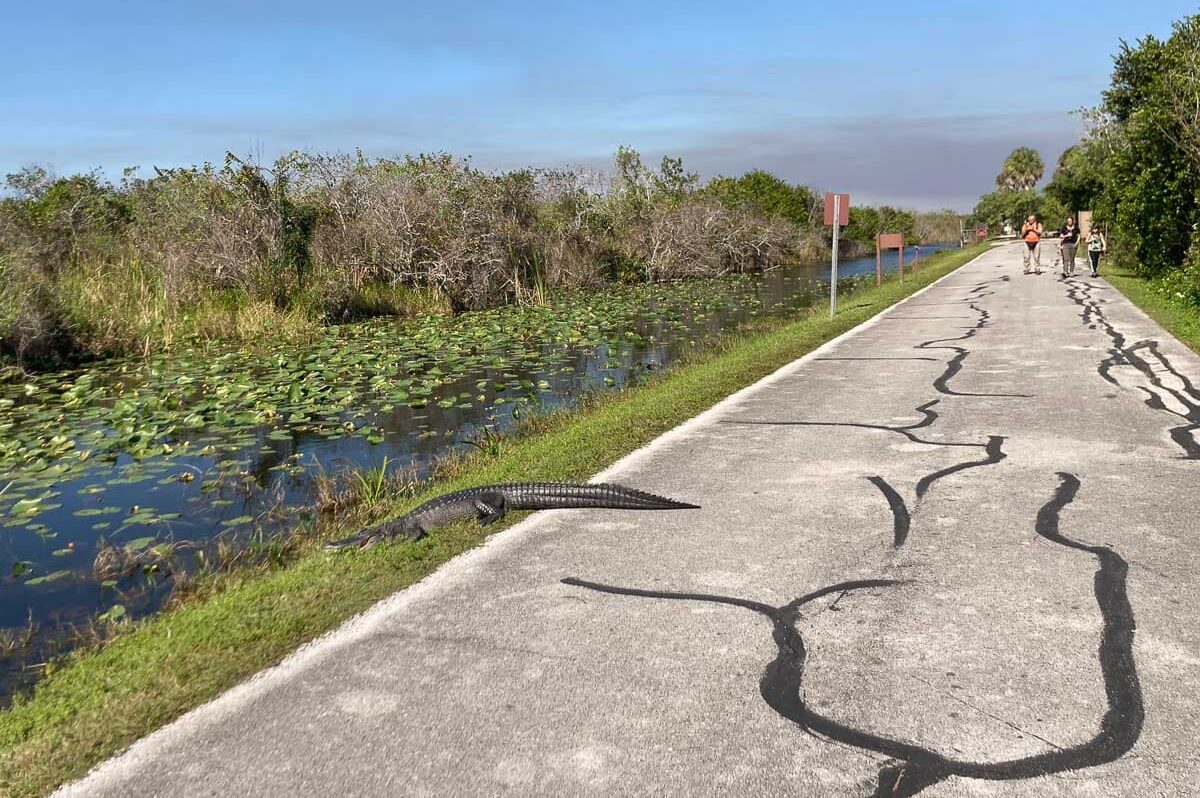
More About Everglades National Park
- Park Website
- Travel Guide
- Topographic Map
- Where to See Wildlife in Everglades National Park
- Where to See Alligators and Crocodiles in the Everglades
- Famous Birds of the Everglades
- Top Sights on the Everglades Main Park Road
- Best Everglades Bike Trails
- Accommodation
Wildlife Safety in Shark Valley, Everglades National Park
One of America’s most biodiverse places, the Everglades are home to innumerable species of animals. This includes several that can be potentially dangerous to humans, from the smallest of insects to the largest of reptiles.
Mosquitoes
During certain times of the year, mosquitoes can be a real nuisance in Everglades National Park, including the Shark Valley area.
Especially during the wet summer months, on overcast days, and at dawn and dusk, these tiny buzzing insects are plentiful. You can avoid (most of) the mosquitoes be staying away from grassy areas and shady places.
To protect yourself from mosquitoes and the possible diseases they may carry, consider wearing long sleeves and pants, and using a strong insect repellent.
Important note: The Aedes species of mosquitoes that could carry the Zika virus is found in southern Florida. However, these mosquitoes are much more prevalent in urban areas than in wilderness areas. You can learn more about the Zika virus here.
Venomous Snakes
There are more than two dozen species of snakes in Everglades National Park, including a few invasive species—most notably the huge Burmese pythons. Of all those snakes, four are venomous:
- Florida cottonmouth
- Eastern coral snake
- Eastern diamondback rattlesnake
- Dusky pygmy rattlesnake
It’s possible to encounter snakes, including venomous ones, pretty much all throughout the Shark Valley area. Watch where you put your feet, especially in grassy areas.
When you see or hear a snake, do not approach it and leave the area calmly. Snakes want to be left alone and will bite only when provoked, cornered, or surprised at close range.
You can learn about rattlesnake safety here.
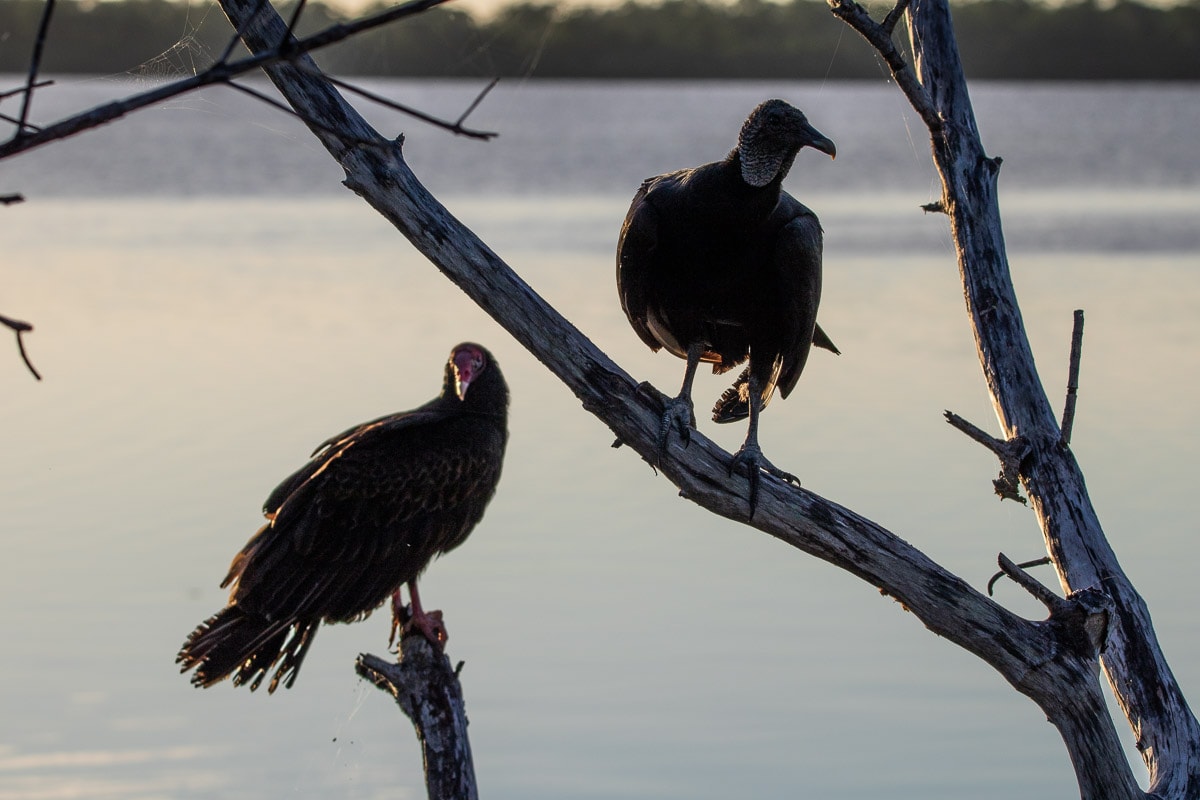
Vultures
Although vultures don’t pose a physical threat to humans, they do, somehow, seem to be attracted to the rubber on vehicles. According to the National Park Service, they “have been known to cause severe damage to windshields, sun roofs, and windshield wipers.”
In many parking lots throughout Everglades National Park, you’ll see signs warning visitors about potential damage to vehicles caused by vultures.
While there’s not a whole lot you can do to completely protect your vehicle, the Park Service does offer a few suggestions:
- Avoid parking near groups of vultures
- Park in full sun
- Use a car cover
- Cover exposed rubber with a wet sheet or towel
- Use loud noises to spook vultures off vehicles
- Notify a ranger
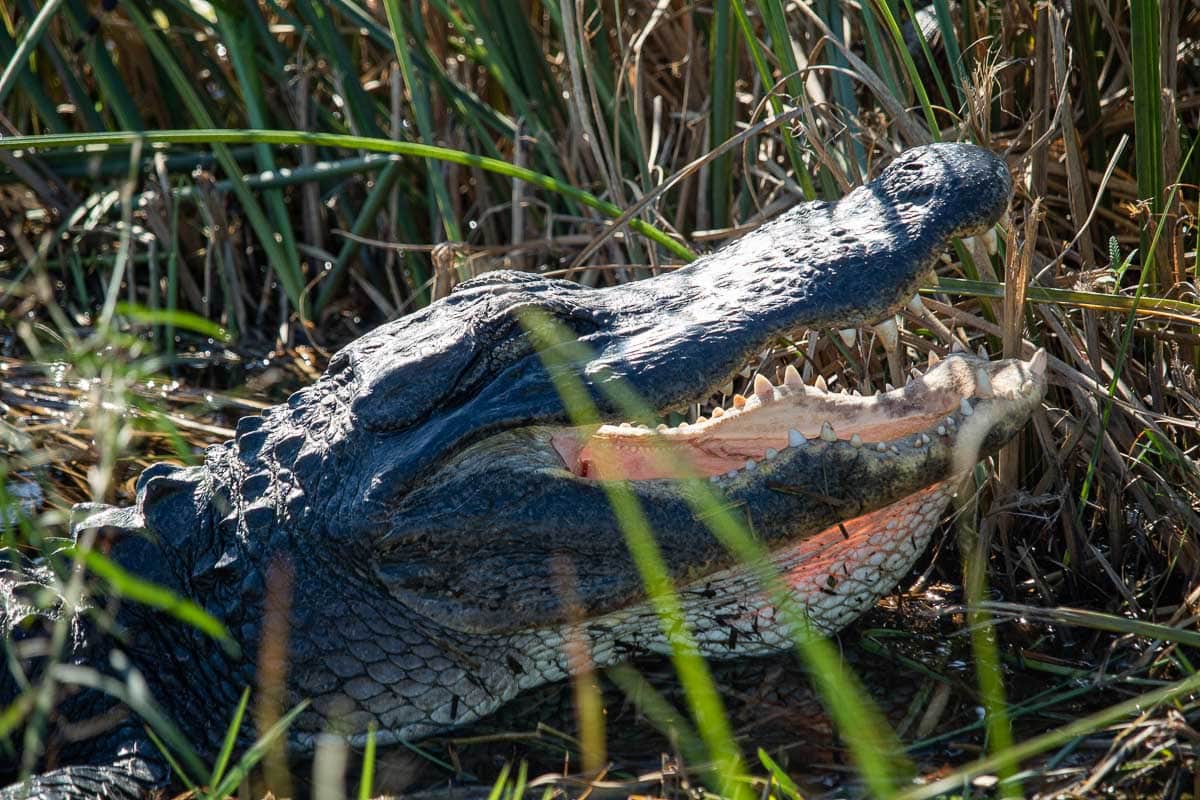
Alligators
According to the National Park Service, “human conflicts with alligators are rare and generally not serious, but incidents do occur and have been reported.”
Most alligator attacks on humans are the result of illegally feeding the alligator. This makes the animal less skeptical of humans and bolder, often causing the alligator to attack instead of fleeing.
Generally speaking, alligators are not considered dangerous to humans in the park. They don’t see humans as prey and do not actively hunt people.
That said, though, it’s still very important to be careful when recreating in alligator country, particularly in places like Shark Valley where you’re all but guaranteed to see some. This is especially true near the water’s edge, whether it’s a canal, pond, river, or marsh.
Avoid behaving like a prey animal might and keep children and pets away from the waterline. The park advises people to stay at least 15 to 20 feet from the shoreline and from any alligators you might come across.
The Park Service reminds visitors that “touching an alligator is never a good idea. Feeding or harassing an animal, including throwing objects at it, is a criminal offense that carries a fine. Any action that alters the natural behaviors of an animal is harassment.”
Additionally, swimming and snorkeling is prohibited everywhere in the park.
Note: Besides alligators, Everglades National Park is also home to crocodiles. In fact, this is the only place in the world where these two reptiles live side by side. However, since crocodiles live in saltwater, you won’t find any of them in Shark Valley. The best place to see crocodiles in the Everglades is the Flamingo area.


